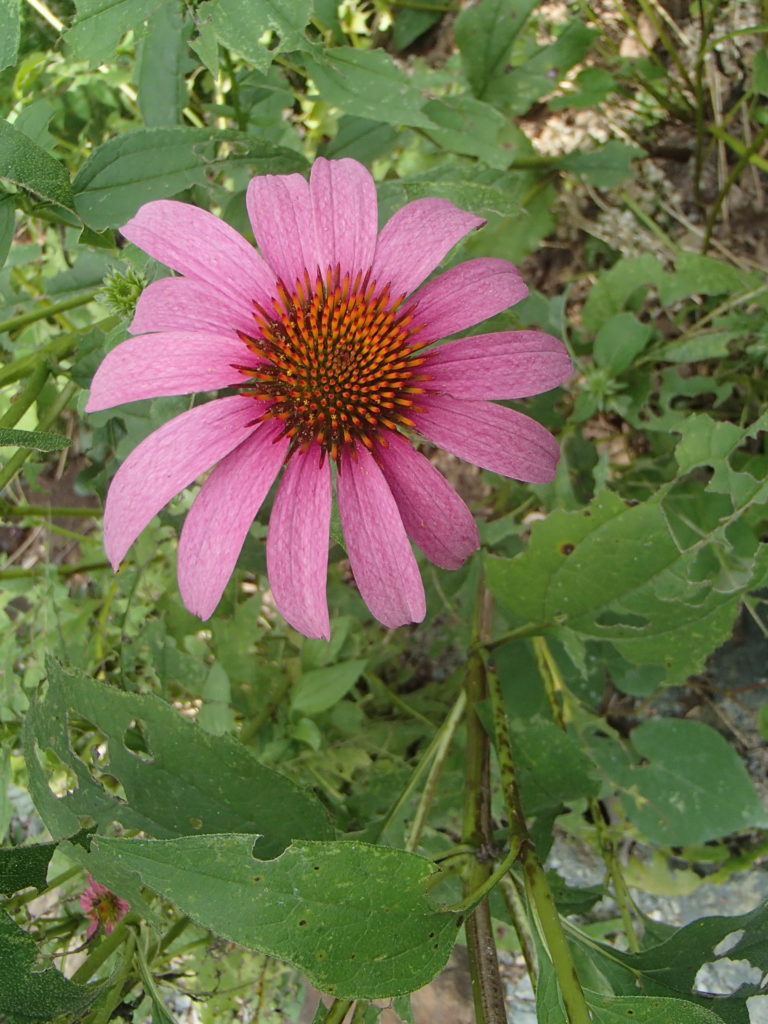Purple Coneflower is found naturally in meadows and roadsides throughout the Central U.S. The few western counties of NC where Purple Coneflower is reported to occur consitute the easternmost edge of its natural range at our latitude. However, this plant must be the all-time favorite native wildflower for sunny pollinator gardens and meadows throughout the south. The ray flowers are shades of pink and droop around a protruding spiny dome of coppery-orange disc flowers. Blooms up to four inches across are borne on the tips of strong stems two to four feet tall, which make these wonderful cut flowers. Purple Coneflower provides bold color from May to September, attracting myriads of butterflies and hummingbirds. Although it will seed out, it is not difficult to control. Purple Coneflower is resistant to drought, is low maintenance, and if left in the garden in the fall will provide food for Goldfinches and many other birds.
NURSERY HOURS
Wednesday: 10-4 Thursday: 10-6 Friday-Saturday: 10-4 Sunday: 12-4
Echinacea purpurea

Key Info
Scientific Name: Echinacea purpurea (L.) Moench
Common Names: Eastern Purple Coneflower, Hedgehog Coneflower
Family Names: Asteraceae (Composite, or Daisy Family)
Plant Type: Herbaceous perennial
Flower Color: Pink? lavender? purple? with yellow/orange center
Special Characteristics: Attracts birds, Attracts bees, Attracts butterflies, Attracts Hummingbirds, Good cut flowers, Drought tolerant
Additional Info
Habit: Upright stems, with little branching, arise from a basal clump, supporting terminal flowers; leaves growing smaller up the stem. The root system is fibrous and short-rhizomatous, developing small, dense colonies of plants.
Height: 2'-4'
Spread: 2'
Soil Conditions: Moist to dry, well drained; pH acidic to basic; sand, loam, clay.
Leaves: Scattered, alternate or opposite leaves, lanceolate with rounded base and widely serrated margins, smaller towards top of the stem.
Flowers (or reproductive structures: Single flowers are daisy-like, up to 4" across and borne at the ends of straight, strong stems. 10-20 purple/pink narrow, sterile ray flowers droop around a domed, gold/orange center or cone of many prickly, perfect, nectar-rich disk florets.
Fruit: Disk florets are replaced by dark achenes that are narrow, flat and dried to a dull brown.
Natural Distribution: Dry,open woods, thickets, prairies, savannas, and limestone glades.
USDA Hardiness Zone: 3 to 8
USDA Wetland Indicator Status in NC: not available
Pollination: Bees, bee flies, butterflies, other insects and hummingbirds
Wildlife Connections: Attracts hummingbirds, butterflies (Monarchs, Fritillaries, Painted Ladies, Swallowtails, Sulfurs, and Whites), skippers and native bees in spring and summer ; in the fall, birds eat the seeds, most notably Eastern Goldfinches.(Illinoiswildflowers.info)
Propagation: By seed or by division.
